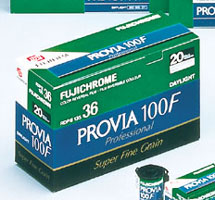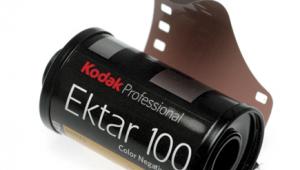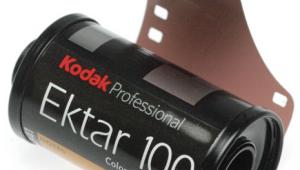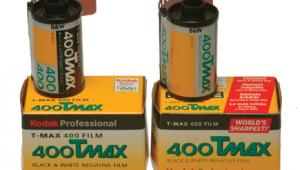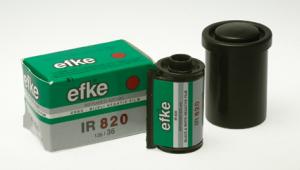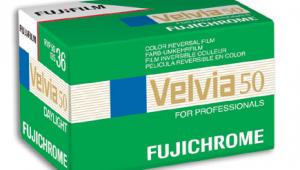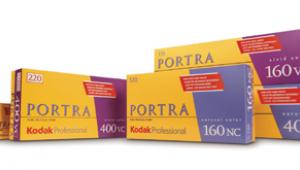New Fujichrome Provia 100F (RDP III)
Although Fujichrome Provia
100 Professional is a top-rated transparency film, the engineers at
Fuji have not been resting on their laurels. Aggressively continuing
their Research and Development activity, they achieved a breakthrough:
an ISO 100 film with the finest grain structure in the world. As mentioned
in our "First Look" report (October, 1999), the RMS 8 granularity
rating of the new Provia 100F is significantly lower than the RMS 9
rating for Velvia--making the new product a "virtually grainless"
color reversal film. |
|||||
· Grain Structure. As
expected, Provia 100F is the hands-down winner in this category. Even
in a blue sky (where grain is generally most noticeable) the new film
is indeed grainless. Only under a microscope does an extremely smooth
grain pattern of consistent size become visible. Granted, Velvia comes
close in this category but it is an ISO 50 film, often rated at ISO 40.
For a conventional ISO 100 slide film, Provia 100 features very fine grain,
but for oversized reproductions, the new Provia 100F would be a better
choice. |
|||||
Color Rendition.
The difference between the two Provia films is minimal in this regard,
at least to my eyes. Some had predicted that the new film would feature
a "warmer" balance, but I found a very neutral look. This
characteristic will be appreciated by professional photographers who are
a conservative group: most would rather use a warming filter when they
deem it necessary. Because Velvia is a warm-tone film, I find this precaution
is not necessary with that film except in extremely "cool"
light as in open shade. |
|||||
Fujichrome Provia 100F (RDP III) Technology With conventional emulsion
technology, faster "speed" (higher ISO rating) generally means
a coarser grain pattern. The reason is simple: the ability to capture
light decreases as grain becomes smaller, reducing the effective "speed"
of the film. Thanks to a Fuji innovation, however, light capturing ability
and efficiency of the Provia 100F emulsion has been substantially improved,
allowing for a superfine grain emulsion in an ISO 100 product. This was
achieved by incorporating Superfine Sigma-Crystal Technology that produces
greatly enhanced light absorption and utilization rates. |
|||||
Other less radical improvements
are also claimed. Advanced Emulsion Aging Stability Technology is said
to improve long-term storage characteristics of unexposed film with minimal
changes in color balance and sensitivity. The Advanced Development Inhibitor
Releaser Technology already employed in other Fujichrome films was further
enhanced with newly developed DIR compounds to attain greater efficiency
and "dramatic improvements in the film's color reproduction
and push-processing characteristics." As well, a newly developed
yellow filter dye is used for superior development of the blue-sensitive
layer for greater stability in push processing. |






